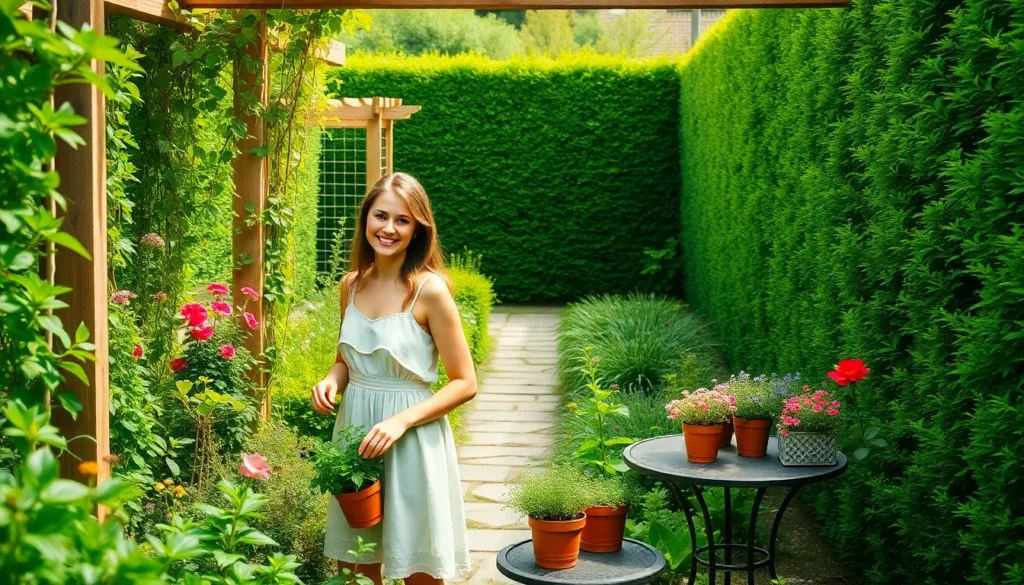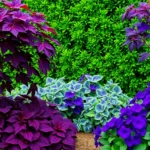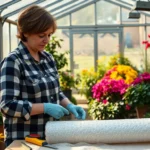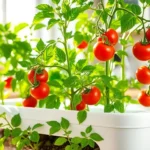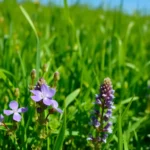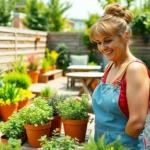We’ve all dreamed of having our own private garden sanctuary where we can escape the chaos of daily life and reconnect with nature. Enclosed gardens offer the perfect solution for creating intimate outdoor spaces that provide privacy, protection, and endless design possibilities right in your backyard.
Whether you’re dealing with nosy neighbors, strong winds, or simply want to define your garden’s boundaries, enclosed garden designs transform any outdoor area into a secluded retreat. From traditional walled courtyards to modern fence-lined spaces, these contained environments let you control everything from lighting and plantings to seating arrangements and focal points.
We’ll explore creative enclosed garden ideas that work for every budget, space, and style preference. You’ll discover how strategic planning and thoughtful design elements can turn even the smallest enclosed area into your personal outdoor oasis that adds value to your home while providing year-round enjoyment.
Creating Privacy With Living Walls and Natural Screens
Living barriers transform any open space into a secluded retreat while adding natural beauty to your enclosed garden design. We’ll explore three effective approaches that deliver both privacy and visual appeal.
Using Fast-Growing Hedge Plants for Instant Privacy
Fast-growing hedge plants offer the quickest solution for establishing natural privacy screens in your enclosed garden. Leyland cypress grows 3-4 feet annually and reaches 15-20 feet at maturity, creating a dense evergreen wall within just a few seasons. Privet hedges expand 2-3 feet per year and respond well to regular trimming, making them perfect for maintaining exact heights and shapes.
Green Giant arborvitae provides exceptional screening potential with growth rates of 3-5 feet annually, eventually forming a thick 20-30 foot barrier that blocks sight lines completely. Photinia shrubs produce vibrant red new growth while maintaining 2-3 feet of annual expansion, offering both privacy and seasonal color interest. Bamboo species like clumping bamboo varieties can grow 1-3 feet yearly without spreading aggressively throughout your garden space.
Plant these hedging options 3-4 feet apart for faster coverage, or space them 5-6 feet apart for budget-conscious installations that fill in over time. Water consistently during the first two growing seasons to establish strong root systems that support rapid vertical growth.
Installing Bamboo Screens for Modern Appeal
Bamboo screening panels deliver contemporary style while providing immediate privacy for enclosed garden spaces. Pre-made bamboo fencing panels range from 4-8 feet in height and install quickly using standard fence posts or mounting brackets. Natural bamboo weathers to an attractive silver-gray patina over time, requiring minimal maintenance beyond occasional cleaning.
Roll-out bamboo screening attaches directly to existing fences or structures using zip ties or wire, making it ideal for renters or temporary privacy answers. Woven bamboo panels offer varying degrees of privacy depending on the tightness of the weave, with tight weaves blocking 90% of sight lines while looser patterns allow filtered views and airflow.
Living bamboo plantings create dramatic vertical screens when contained properly using root barriers or large planters. Clumping varieties like Buddha’s belly bamboo or fountain bamboo won’t spread aggressively while providing 8-12 feet of natural screening within 2-3 years.
Consider combining bamboo panels with lighting elements like string lights or solar spotlights to create evening ambiance in your private garden retreat. Position panels to block prevailing winds while maintaining access points for garden maintenance and circulation.
Building Trellis Systems With Climbing Vines
Trellis structures support climbing plants that develop into lush living walls over one to two growing seasons. Cedar or pressure-treated lumber trellises provide durable frameworks that support heavy vine growth while resisting weather damage for 10-15 years. Metal trellises made from powder-coated steel or aluminum offer sleeker appearances and can support vigorous climbers like grape vines or hardy kiwi.
Clematis vines produce spectacular flowers while growing 6-20 feet annually depending on the variety, creating colorful privacy screens from spring through fall. Honeysuckle climbers grow rapidly and attract hummingbirds and butterflies while providing dense coverage and sweet fragrance. Virginia creeper offers excellent fall color and grows in most soil conditions, reaching 30-50 feet when established.
Install trellis systems 12-18 inches away from fences or walls to allow air circulation and prevent moisture problems. Space vertical supports 6-8 feet apart and include horizontal elements every 12-18 inches to guide vine growth effectively. Choose annual vines like morning glories or moonflowers for quick seasonal coverage, or select perennial options like trumpet vine for permanent screening answers.
Building Traditional Fence Structures for Garden Enclosure
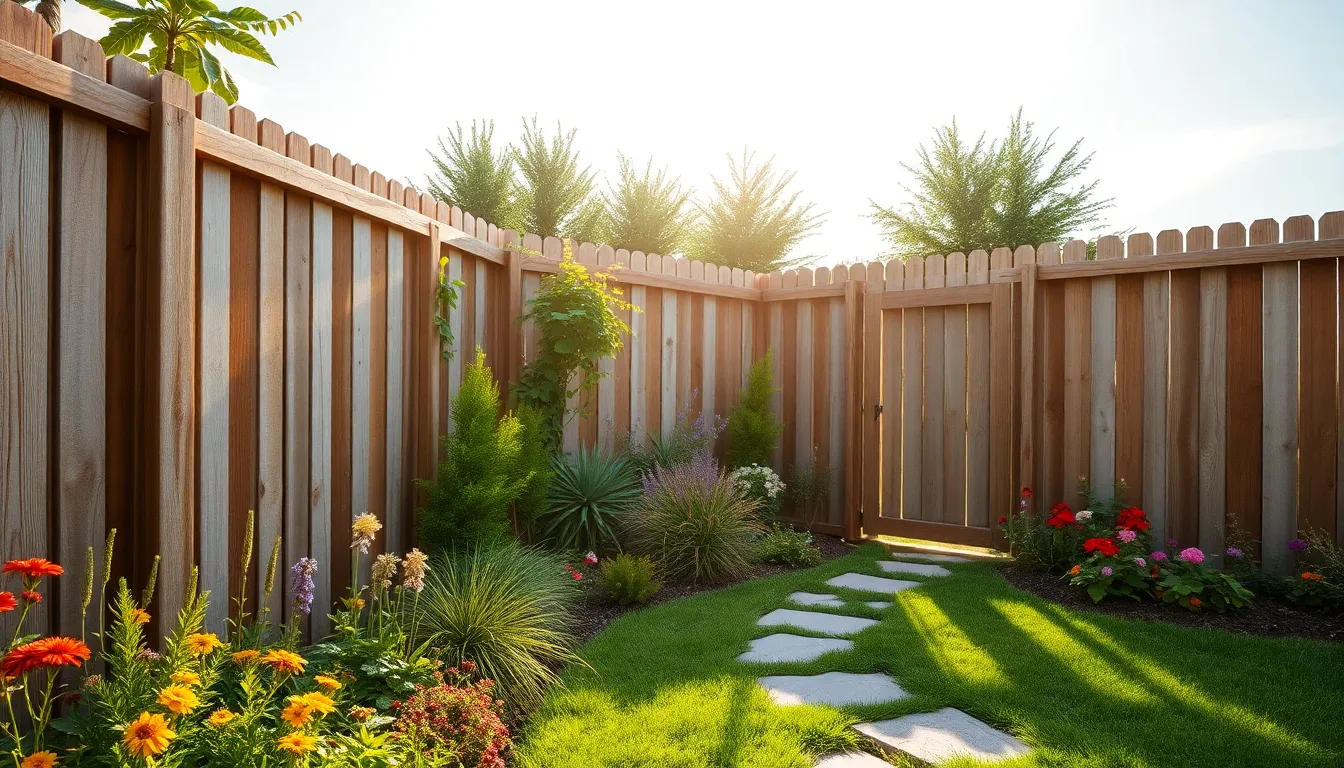
While living walls and natural screens provide organic privacy answers, traditional fence structures offer immediate boundary definition and long-term durability for our enclosed garden spaces.
Choosing Wood Fencing for Rustic Charm
Wooden fences deliver timeless appeal that complements our garden’s natural elements beautifully. Cedar stands out as our top choice because it naturally resists rot and insects while developing an attractive silver-gray patina over time. Pine offers budget-friendly versatility that we can easily customize with stains or paints to match our garden’s color scheme. Oak provides maximum durability for high-traffic areas where we need fencing that’ll withstand decades of use.
Staining options let us enhance the wood’s natural beauty while protecting it from weather damage. Clear sealers preserve the original wood tone, while semi-transparent stains add subtle color depth. Painting approaches work best when we want bold colors or need to match existing structures like our home’s exterior trim.
| Wood Type | Cost Range | Lifespan | Maintenance Level |
|---|---|---|---|
| Cedar | $15-25/linear ft | 15-20 years | Low |
| Pine | $8-15/linear ft | 10-15 years | Medium |
| Oak | $20-30/linear ft | 20+ years | Low |
Installing Metal Fencing for Contemporary Style
Metal fencing creates clean lines that complement modern garden designs perfectly. Aluminum proves ideal for most residential applications because it won’t rust and requires minimal upkeep throughout its lifetime. Steel offers superior strength for areas where we need maximum security or wind resistance.
Style variations range from sleek horizontal slats to ornate decorative patterns that add visual interest. Modern designs feature powder-coated finishes in colors like charcoal gray or forest green that blend seamlessly with our industry. Ornate options include scrollwork and geometric patterns that create striking focal points while maintaining our garden’s enclosed feel.
Aluminum panels typically cost $25-40 per linear foot installed, while steel options range from $30-50 per linear foot depending on design complexity.
Creating Stone and Brick Boundary Walls
Stone and brick walls provide the most permanent and elegant solution for our enclosed garden boundaries. Natural stone creates organic textures that age beautifully and increase our property value significantly over time. Brick offers consistent appearance with excellent structural integrity that’ll last generations with proper installation.
Durability benefits include resistance to weather extremes, pest damage, and accidental impacts from lawn equipment. These materials require virtually no maintenance beyond occasional cleaning. Design flexibility allows us to incorporate planters, seating areas, or decorative niches directly into the wall structure.
Installation requires professional expertise for proper foundation work and drainage considerations. Stone walls typically cost $40-80 per linear foot, while brick installations range from $25-45 per linear foot depending on brick quality and design complexity.
Designing Cozy Courtyard Gardens in Small Spaces
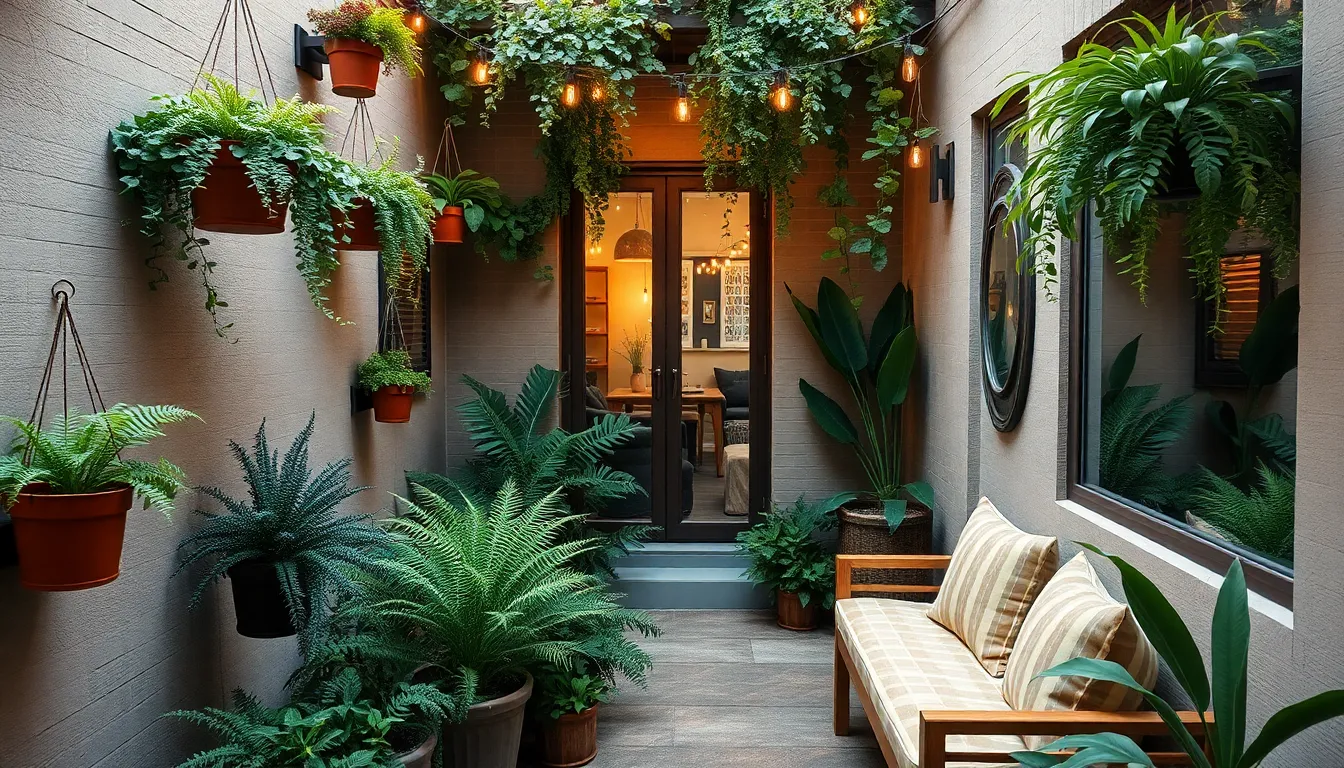
Small enclosed spaces offer unique opportunities to create intimate garden retreats that feel both cozy and functional. We’ll explore strategic design approaches that transform compact courtyards into welcoming outdoor sanctuaries.
Maximizing Limited Square Footage With Vertical Elements
Hanging planters transform unused overhead space into productive growing areas while keeping floor space clear for movement and seating. We recommend selecting plants like ferns, herbs, or shallow rooted vegetables that thrive in suspended containers without overwhelming the visual space below.
Trellises and arbors serve dual purposes by providing structural interest and supporting climbing plants that grow upward rather than outward. Installing these vertical elements creates natural room dividers while offering shade and privacy for seating areas underneath.
Vertical garden systems make the most efficient use of wall space by accommodating multiple plants in a compact footprint. We suggest living wall installations or modular planting systems that can house everything from succulents to small vegetables in vertical arrangements.
Trained fruit trees maximize food production in minimal space through espalier techniques that flatten growth patterns against walls or fences. These space saving options provide both edible harvests and attractive foliage throughout growing seasons.
Creating Intimate Seating Areas Within Enclosed Spaces
Built in seating doubles functionality by incorporating hidden storage compartments beneath bench surfaces for garden tools or outdoor cushions. Custom designed seating eliminates the need for separate furniture pieces while creating permanent gathering spots that feel integrated with the garden design.
Corner seating arrangements use otherwise awkward spaces efficiently by fitting custom built benches into angular areas where standard furniture wouldn’t work. Strategic placement in corners creates cozy conversation nooks that feel naturally sheltered within the enclosed space.
Ambient lighting installations extend the usability of seating areas into evening hours while creating warm atmospheric effects. We recommend incorporating string lights, lanterns, or subtle LED fixtures that highlight focal points without overwhelming the intimate scale of courtyard spaces.
Compact fire features provide natural gathering points that draw people together while offering warmth during cooler seasons. Small fire bowls or tabletop fire elements create focal points without requiring extensive installation or consuming valuable floor space.
Using Mirrors and Light to Expand Visual Space
Strategic mirror placement creates illusions of expanded space by reflecting light and scenery throughout the courtyard. We position mirrors to catch natural light from above while reflecting plantings and architectural elements to double the visual impact of existing features.
Natural light optimization involves positioning plants and structures to allow maximum sunlight penetration into enclosed spaces. Careful planning ensures that vertical elements don’t block essential light while still providing desired privacy and structure.
Outdoor lighting systems highlight focal points and architectural features to create depth and visual interest after dark. Well placed fixtures can make small spaces feel larger by drawing attention to boundary walls and creating layers of illumination throughout the garden.
Reflective surfaces amplify available light through water features like small fountains or birdbaths that catch and scatter sunlight. These elements add movement and sparkle while creating soothing sounds that enhance the peaceful atmosphere of intimate courtyard settings.
Incorporating Water Features in Enclosed Garden Designs
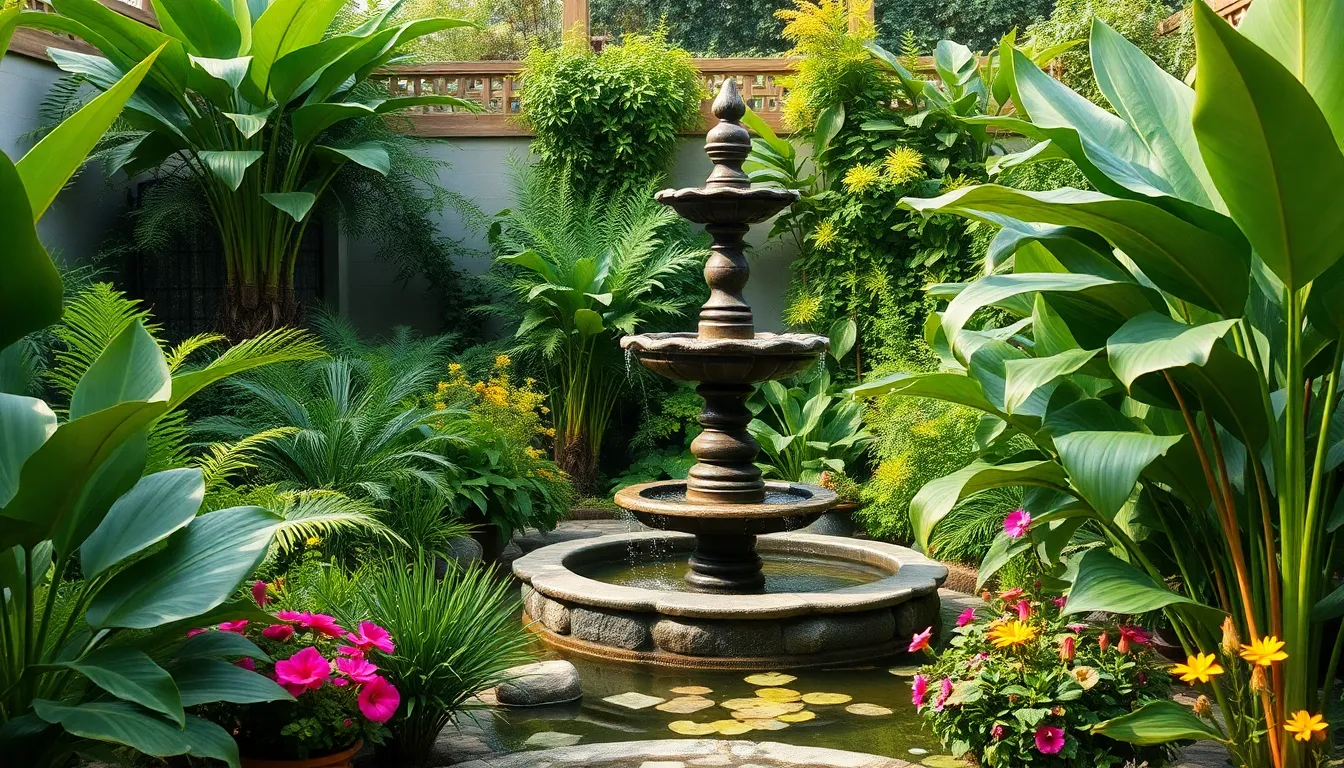
Water elements transform enclosed gardens into tranquil retreats that engage multiple senses. These features complement the privacy and intimacy we’ve established with walls, screens, and strategic plantings.
Adding Fountain Elements for Soothing Sounds
Fountains create the perfect auditory backdrop for our enclosed garden sanctuaries. Traditional tiered fountains work beautifully in formal garden settings, while wooden barrel water gardens add rustic charm to cottage style spaces. Fountain with pond combinations maximize impact by providing both sound and visual interest in a single feature.
Placement determines the fountain’s effectiveness in masking outside noise and creating ambiance. Corner installations use existing walls for support and amplify sound through reflection. Central positioning makes the fountain a focal point that draws attention throughout the garden space.
Modern spillway fountains suit contemporary enclosed gardens with their clean lines and minimalist appeal. Wall mounted fountain designs save ground space while delivering the same soothing water sounds we desire. Solar powered fountain options eliminate electrical complications and provide eco friendly operation.
Installing Small Ponds for Wildlife Attraction
Small ponds invite birds, butterflies, and beneficial insects into our enclosed garden spaces. Wildlife friendly pond designs include shallow edges for drinking access and deeper sections for safety. Lighted water features extend pond enjoyment into evening hours while creating dramatic visual effects.
Giant rhubarb and elephant ear plants around pond perimeters provide natural habitat and stunning foliage contrast. These large leafed specimens create microenvironments that attract diverse wildlife species. Native aquatic plants establish balanced ecosystems that require minimal maintenance once established.
Positioning matters greatly for pond success and wildlife attraction. Morning sun locations warm water naturally and support healthy plant growth. Protected areas near existing walls or screens provide wildlife shelter while maintaining our garden’s intimate feel.
Creating Water Wall Features for Modern Appeal
Water walls deliver contemporary style that complements sleek enclosed garden designs. DIY water wall projects allow customization to match our exact space requirements and aesthetic preferences. Natural stone waterfall installations blend modern functionality with organic materials for sophisticated appeal.
Symmetrical sleek garden pools paired with vertical water walls create stunning architectural statements. These features work especially well against existing walls or privacy screens we’ve installed. Romantic wall water features soften harsh boundaries while adding movement and sound.
Installation requires proper electrical planning and waterproofing to ensure long term performance. Recirculating pump systems conserve water while maintaining continuous flow. LED lighting integration highlights water movement and creates enchanting nighttime displays that enhance our enclosed garden’s ambiance.
Establishing Themed Enclosed Garden Rooms
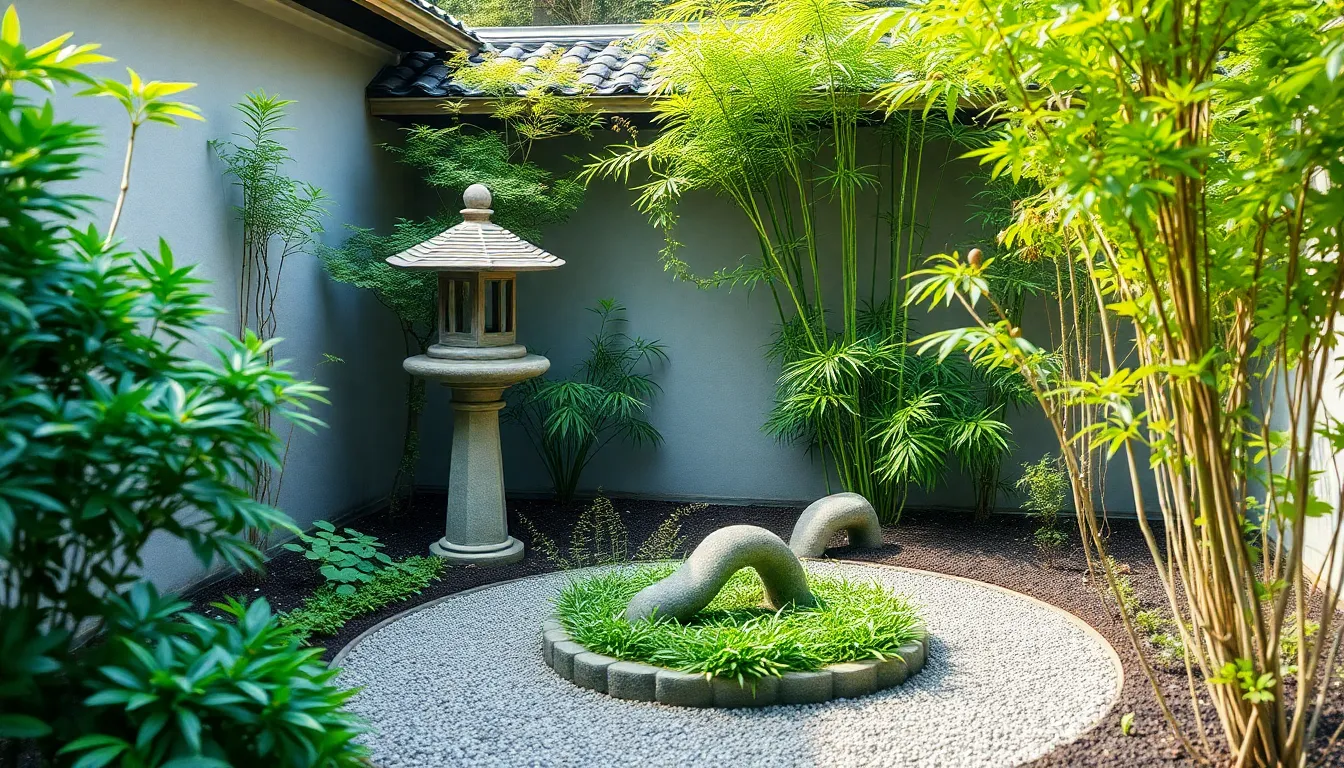
We can transform our enclosed garden spaces by incorporating distinct cultural themes that reflect exact design philosophies and aesthetic preferences. These themed approaches allow us to create cohesive outdoor environments that transport us to different regions of the industry.
Designing Mediterranean-Style Enclosed Courtyards
Mediterranean courtyards capture the essence of southern European charm through warm materials and architectural elements. We start by utilizing existing stone walls or constructing new ones to establish a private foundation for our courtyard design. Arched entrances create dramatic focal points while incorporating warm toned materials that reflect the Mediterranean aesthetic.
Decorative elements transform our enclosed space into an authentic retreat. Terracotta pots filled with olive trees provide classic Mediterranean vegetation that thrives in contained environments. Fountains add the soothing sound of water while mosaics introduce colorful artistic details throughout the space. Large potted plants like lavender, rosemary, and citrus trees complete the ambiance with their distinctive fragrances and textures.
Creating Japanese-Inspired Private Garden Spaces
Japanese garden design emphasizes tranquility through carefully curated natural elements and minimalist principles. We begin by installing sliding wooden gates or shoji screens that create serene entrances while maintaining privacy. These entrance features set the tone for the contemplative atmosphere we’re establishing within our enclosed space.
Natural elements form the foundation of our Japanese inspired design approach. Stone lanterns provide gentle lighting while bamboo features add vertical interest and natural texture. Water features like small fountains or stone basins introduce the calming sound of flowing water that’s essential to Japanese garden philosophy.
Miniature landscapes allow us to incorporate traditional Japanese design concepts within our enclosed boundaries. Bonsai gardens showcase carefully maintained trees that represent nature in miniature form. Carefully manicured gravel areas with raked patterns create meditation spaces that encourage reflection and peaceful contemplation.
Building English Cottage Garden Enclosures
English cottage gardens embrace abundance and informal beauty through diverse plantings and charming structural elements. We establish our cottage garden enclosure using white picket fencing that creates the quintessential rustic boundary while maintaining an inviting appearance. This classic fencing style perfectly complements the informal nature of cottage garden design.
Floral abundance defines the cottage garden aesthetic through diverse plant selections. We plant colorful flowers including roses, delphiniums, and hollyhocks alongside aromatic herbs like thyme, sage, and mint. This combination creates a lush and vibrant atmosphere that changes throughout the growing seasons.
Winding pathways guide visitors through our cottage garden enclosure while adding structural interest. Stone or brick pathways meander between planted areas, encouraging exploration while providing practical access to different garden zones. These pathways create intimate spaces within our larger enclosed area while maintaining the informal charm that defines English cottage garden style.
Maximizing Year-Round Interest With Seasonal Plantings
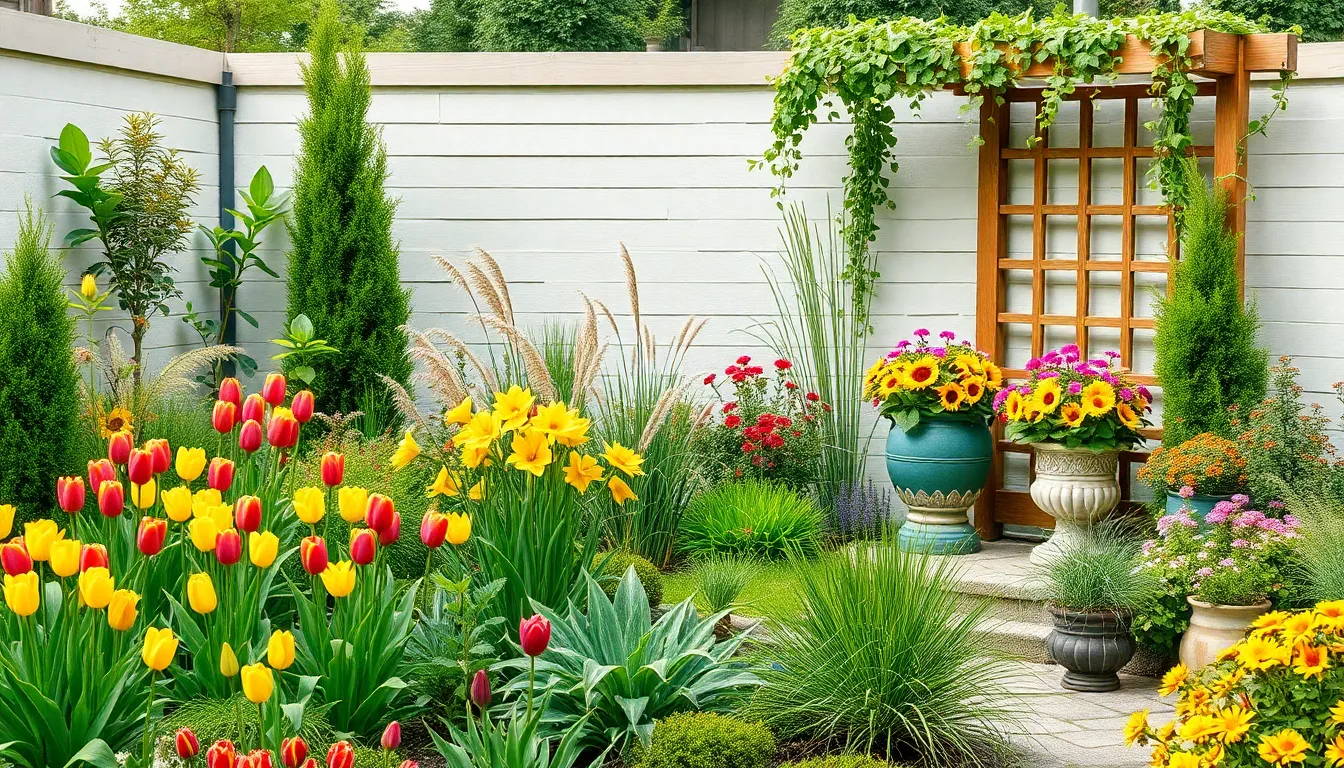
Creating visual appeal across all four seasons transforms enclosed gardens from temporary displays into ever-changing living spaces. Strategic plant selection ensures our garden boundaries remain attractive whether we’re enjoying spring blooms or winter structure.
Selecting Evergreen Plants for Continuous Structure
Evergreen shrubs form the backbone of successful year-round garden design within enclosed spaces. Boxwood, holly, and yew create reliable hedges that maintain their shape and provide consistent privacy screening throughout winter months. These versatile plants work exceptionally well as living boundaries while offering the flexibility to shape into formal topiaries or informal natural screens.
Small evergreen trees anchor our enclosed garden layouts with permanent vertical elements. Dwarf spruces and arborvitae varieties fit perfectly within limited boundary spaces while delivering that essential green backdrop we need during dormant seasons. Their compact growth habits prevent overcrowding while establishing the structural framework that supports seasonal plantings around them.
Evergreen foundation plantings create visual stability that allows seasonal elements to shine without overwhelming the overall design. We can position these permanent plants strategically along fence lines or wall boundaries to maintain year-round interest even when colorful annuals fade.
Planning Seasonal Color Displays Within Boundaries
Seasonal blooms create rotating displays that keep our enclosed gardens fresh and captivating throughout the year. Spring bulbs like tulips and daffodils emerge first to celebrate winter’s end, followed by summer flowers including roses and sunflowers that provide peak growing season color. Fall foliage from carefully selected maples adds warm autumn tones, while winter interest comes from snowdrops and ornamental bark features.
Garden structures like pergolas, trellises, and gazebos serve as focal points that support climbing plants with seasonal variations. These permanent installations become living canvases that change dramatically as different vines and climbers cycle through their growing seasons.
Colorful containers offer the ultimate flexibility for seasonal displays within our enclosed boundaries. We can easily swap out planters filled with seasonal flowers or foliage to instantly refresh the garden’s appearance without major replanting efforts.
Ornamental grasses add texture and movement while transitioning through seasonal color changes. These ever-changing plants provide visual interest from spring emergence through winter seed heads, creating natural seasonal transitions within our enclosed spaces.
Incorporating Edible Plants in Enclosed Kitchen Gardens
Herbs and vegetables transform enclosed gardens into productive spaces that combine beauty with functionality. Raised beds create organized growing areas for herbs like basil and rosemary alongside vegetables such as tomatoes and carrots, allowing us to arrange plantings for both visual appeal and easy harvesting access.
Dwarf fruit trees and berry bushes deliver dual benefits by providing seasonal blooms, attractive foliage, and homegrown produce within our enclosed boundaries. These productive plants contribute to the garden’s aesthetic while supplying fresh ingredients for our kitchens throughout the growing season.
Edible landscaping integrates seamlessly with ornamental plantings when we select varieties with attractive growth habits and seasonal interest. Many herbs offer fragrant foliage and colorful flowers that enhance the overall garden design while serving culinary purposes.
Kitchen garden layouts within enclosed spaces benefit from companion planting strategies that maximize growing potential while creating visually pleasing combinations of textures, heights, and seasonal changes.
Enhancing Enclosed Gardens With Lighting and Accessories
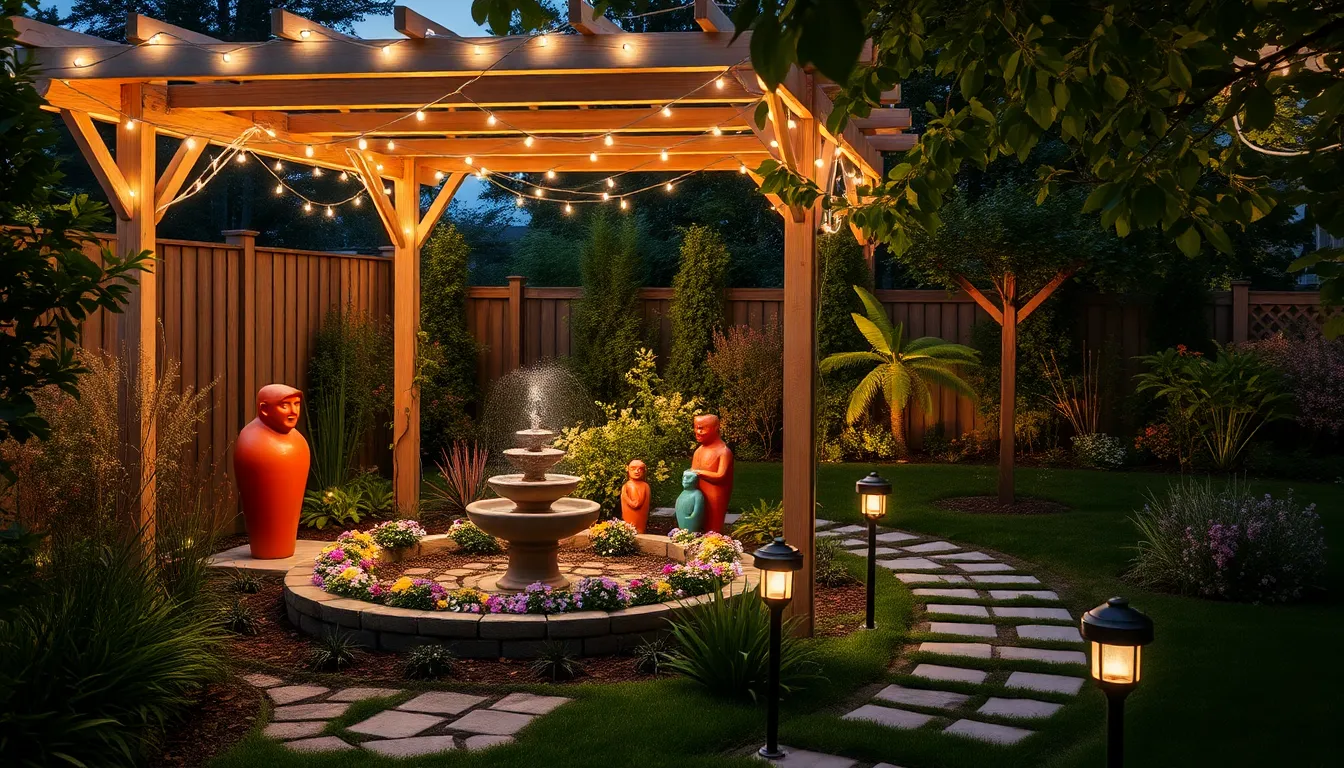
Thoughtful lighting and accessories transform enclosed gardens into captivating spaces that remain beautiful and functional long after sunset. We’ve discovered that strategic additions can dramatically enhance both the aesthetic appeal and practical value of our garden retreats.
Installing Strategic Lighting for Evening Ambiance
Solar powered lights offer the perfect solution for illuminating pathways and highlighting garden features without raising electricity bills. We recommend placing these lights along walkways and near focal points like water features or specimen plants to create guided tours through our evening gardens.
String lights add a whimsical touch when hung from gazebos or pergolas, creating warm ambiance that extends our outdoor enjoyment well into the night. These versatile lights work particularly well in courtyard gardens where they can be draped between walls or suspended from overhead structures.
LED pathway lights provide excellent guidance for visitors while emphasizing exact plants or garden sections with precision lighting. We’ve found that these energy efficient options last longer than traditional bulbs and offer consistent illumination throughout the growing season.
Adding Garden Art and Decorative Elements
Sculptures and statues incorporate visual interest and personality into our enclosed spaces while serving as permanent focal points that draw the eye. Contemporary pieces work well in modern garden designs, while classical statues complement traditional English cottage gardens perfectly.
Fountains and water features create soothing sounds that enhance the aesthetic appeal of our private retreats. Small fountains fit beautifully into corner spaces, while larger installations can anchor central areas and provide tranquil background music for relaxation.
Birdhouses and feeders attract wildlife and increase biodiversity within our enclosed gardens. These functional decorations serve dual purposes by providing habitat for beneficial species while adding charming architectural elements to our garden walls and fence lines.
Creating Storage Answers Within Enclosed Spaces
Garden sheds provide essential storage for tools, seeds, and other gardening supplies while maintaining the organized appearance of our enclosed areas. We recommend choosing shed styles that complement our garden themes, whether cottage inspired designs or sleek modern structures.
Vertical storage maximizes space efficiency by utilizing trellises or wall mounted storage units to keep gardens organized without sacrificing growing area. These answers work particularly well in smaller courtyards where every square foot matters for both plants and storage needs.
Under bench storage incorporates hidden compartments that stash items like gloves and hand tools while providing comfortable seating for garden enjoyment. Built in benches with storage capabilities serve multiple functions and help maintain the clean lines that make enclosed gardens feel more spacious.
Conclusion
Creating your perfect enclosed garden doesn’t have to be overwhelming when you break it down into manageable steps. We’ve shown you that whether you’re working with a tiny courtyard or a spacious backyard there are countless ways to build privacy and transform your outdoor space into a personal retreat.
The key lies in choosing the right combination of elements that match your lifestyle budget and maintenance preferences. From living walls and water features to seasonal plantings and ambient lighting each component works together to create a cohesive outdoor sanctuary.
Remember that the best enclosed gardens evolve over time. Start with the basics like privacy screening and seating then gradually add features like garden art storage answers and seasonal displays as your space develops and your needs change.
Frequently Asked Questions
What is an enclosed garden?
An enclosed garden is a private outdoor sanctuary that provides privacy and protection from elements like wind and prying eyes. These gardens are typically surrounded by fences, walls, hedges, or screens, creating a secluded retreat where you can escape daily life and reconnect with nature in your own backyard.
What are the best plants for creating natural privacy screens?
Fast-growing hedge plants are ideal for natural privacy barriers. Top choices include Leyland cypress, privet, Green Giant arborvitae, and Photinia shrubs. These plants establish dense coverage quickly. For climbing options, consider clematis, honeysuckle, and other vines that can grow on trellises to create lush living walls.
How can I create privacy in my garden on a budget?
Budget-friendly privacy options include bamboo roll-out screens, pine fencing, and DIY trellis systems for climbing vines. You can also plant fast-growing hedge plants which cost less than installing permanent structures. Living walls using climbing plants provide an economical solution that improves over time as plants mature.
What materials work best for garden fencing?
Cedar is excellent for wooden fencing due to its natural rot resistance and attractive appearance. For budget options, pine works well with proper treatment. Metal options include low-maintenance aluminum for modern looks and steel for added security. Stone and brick walls offer permanent, elegant solutions with excellent durability.
How do I make a small courtyard garden feel larger?
Maximize vertical space with hanging planters, trellises, and vertical garden systems. Use mirrors strategically to reflect light and create the illusion of more space. Install proper lighting to extend usability into evening hours. Choose light colors and avoid overcrowding to maintain an open, airy feeling in compact spaces.
What water features work well in enclosed gardens?
Fountains provide soothing sounds and work in various styles from traditional tiered to modern spillway designs. Small ponds attract wildlife and create focal points when placed strategically with native aquatic plants. Water walls offer contemporary appeal and can be enhanced with LED lighting for dramatic nighttime effects.
How can I maintain year-round interest in my enclosed garden?
Plant evergreens like boxwood, holly, and yew for continuous structure and privacy. Plan seasonal displays with spring bulbs, summer flowers, and fall foliage plants. Include garden structures like pergolas and use colorful containers for dynamic visual appeal. Dwarf evergreen trees provide year-round anchoring elements for your design.
Can I grow food in an enclosed garden?
Yes! Kitchen gardens combine beauty with functionality. Use raised beds for organized herb and vegetable growing. Plant dwarf fruit trees and berry bushes for seasonal blooms and homegrown produce. Implement companion planting strategies to maximize space while creating visually appealing combinations of edible and ornamental plants.
What lighting options work best for enclosed gardens?
Solar-powered lights are energy-efficient and easy to install. String lights create ambient atmosphere for entertaining. LED pathway lights ensure safe navigation while highlighting garden features. Consider uplighting for trees and downlighting for seating areas. Combine different lighting types to create layers of illumination for various moods and functions.
How do I add storage to my enclosed garden without cluttering the space?
Install garden sheds for larger tool storage needs. Use vertical storage solutions like wall-mounted racks and hooks. Consider under-bench storage that doubles as seating. Choose storage options that complement your garden’s design aesthetic. Built-in solutions often work better than standalone pieces in maintaining a cohesive, organized appearance.

